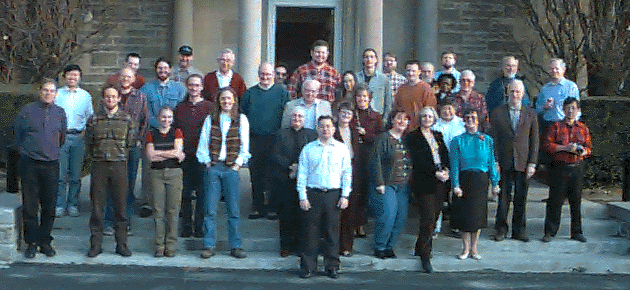Volume 30, Number 5
February 12, 1999


The Doings of the Department of Astronomy
and the David Dunlap Observatory
COVER PICTURE: 1998 Christmas Countdown

Group photograph of participants at the December 1998 Christmas Countdown.
THE DOINGS OF THE DEPARTMENT OF ASTRONOMY
AND THE DAVID DUNLAP OBSERVATORY
ISSN 1209-0182
Editors: Brian Beattie & R.F. Garrison
Associate Editor: Tracy Clarke
© Governing Council, University of Toronto, 1999



